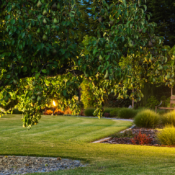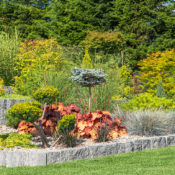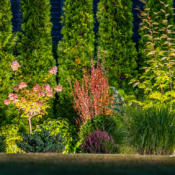Optimizing Irrigation in Seattle’s Rainy Environment

Optimizing Irrigation in Seattle’s Rainy Environment
In Seattle, where the needle of the Space Needle often points towards overcast skies, the rain is as much a part of the city’s identity as its coffee or tech startups. But when it comes to landscaping, this abundance of rainfall can be both a blessing and a challenge. Efficient irrigation, then, becomes the cornerstone of a lush and thriving lawn or garden. In this guide, we explore how homeowners in Seattle can balance the city’s natural precipitation with smart irrigation strategies.
Introduction: Balancing Seattle’s Natural Rain with Supplemental Irrigation
If there’s one thing every Seattleite knows, it’s that predicting the rain isn’t as simple as checking a weather app. Drizzles can turn into downpours, and sunny forecasts might still come with a sprinkle. For gardens, this means the risk of overwatering or under-watering is ever-present. The solution? Understanding the local soil and integrating modern irrigation techniques.
Understanding the Local Soil: How it Absorbs and Retains Water
The Pacific Northwest boasts rich, loamy soil – a mixture of sand, silt, and clay. This type of soil is prized for its ability to retain moisture while ensuring proper drainage. By conducting a simple hand test (squeezing a handful of soil), homeowners can gauge its moisture content. If it holds its shape but crumbles upon touch, it’s just right. If it’s too hard or too sludgy, adjustments in irrigation may be necessary.
Technologies Tailored for Rain-Rich Environments: Smart Controllers and Rain Sensors
Enter the world of smart irrigation. For the tech-savvy Seattle homeowner, smart controllers can be a game-changer. These devices, often synced with smartphones or home management systems, can adjust watering schedules based on real-time weather data. This means if an unexpected rain shower passes by, the system may delay or even skip its watering cycle, conserving water and ensuring plants aren’t overwatered.
Rain sensors, another worthy addition, are devices that halt irrigation when they detect rainfall. They ensure that gardens don’t get double-watered, saving both resources and protecting plants.
Best Practices: When and How Often to Water
Despite the frequent rain, there are times, especially in summer, when Seattle experiences drier spells. During these periods:
- Water during the early morning. This reduces evaporation and gives plants ample time to absorb moisture before the warmer parts of the day.
- Prioritize deep, infrequent watering over daily light watering. This encourages deeper root growth, making plants more resilient in the long run.
- Monitor and adjust. Regularly check soil moisture and adjust irrigation as necessary. Remember, it’s easier to add more water than to correct overwatering.
Conclusion: The Value of a Well-Planned Irrigation Strategy in Seattle
In the Emerald City, where the landscapes are as vibrant as its urban core, a thoughtful approach to irrigation is essential. By combining an understanding of the local environment with modern technology, Seattle homeowners can cultivate gardens that are not just beautiful, but also resilient and sustainable. After all, in a place where rain is celebrated, optimizing its benefits for the landscape is only fitting.




